There are many factors that homeowners consider when planning a home remodeling project, ranging from aesthetics to functionality to the impact on the environment and, of course, the cost of the project.
Regardless of project size (whether it’s a minor refresh or a complete remodel), there are eco-friendly options available that can result in lower energy and maintenance costs and create a healthier home.
This guide covers the basic principles of green remodeling, and how to plan a green remodeling project.
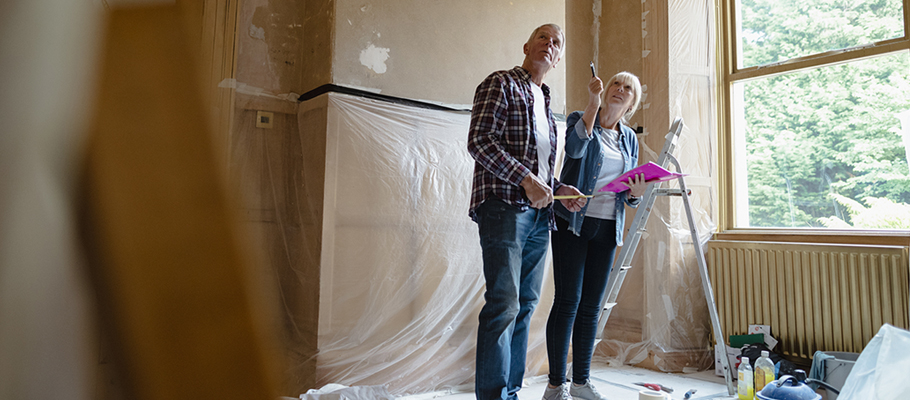
Green Remodeling Basics
Green remodeling means thinking about your remodeling project with an eye toward its impact on the environment. Waste reduction and recycling, energy efficiency, and using sustainable materials are all important planning considerations.
Your best approach is to focus on making green decisions from the very start. This way, they aren’t viewed as separate but are integrated into your overall design and plan.
Assess materials and plan ahead to manage waste
Start by assessing what materials are involved in your project. Do you need to remove materials before you can get started? Could the materials have a second life in another project? Consider donating, selling, or giving away items to extend their life and keep useable materials out of landfills.
See the list of building material reuse organizations in the Twin Cities (PDF). Contact the organization directly to find out what types of materials they accept for reuse.
Consider deconstruction
Another green remodeling option is deconstruction, which means building materials are taken apart mostly by hand and materials are sorted into categories for efficient reuse and recycling. Commonly reused materials from remodeling projects include bathroom vanities and sinks, cabinetry, plumbing fixtures, solid wood doors, wood flooring, and more.
Hennepin County offers deconstruction grants of up to $5,000 for remodeling and full building removal projects that are larger than 500 square feet on residential properties built before 1970.
The funds can offset the additional time and labor costs associated with deconstruction. Deconstruction grant details and application.
For larger remodeling projects, consider using a construction debris recycling business.
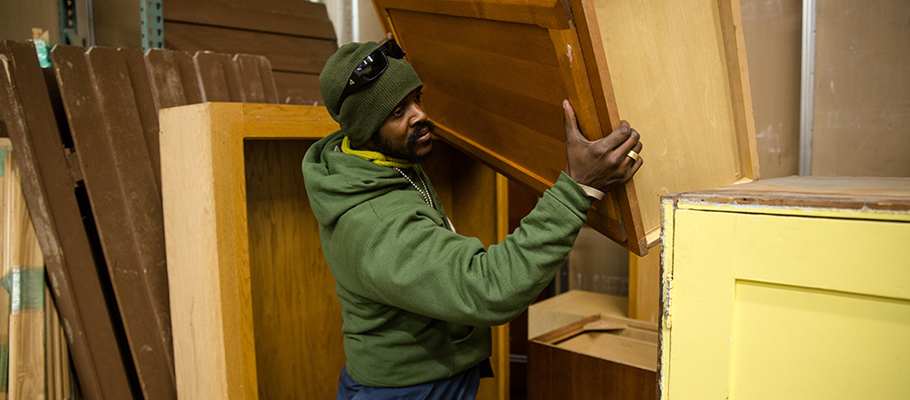
Recycle and properly dispose of materials
Some building materials that can’t be salvaged for reuse can still be recycled at a construction and demolition processing facility. These facilities recycle materials such as asphalt, metals, and wood, and put materials to better use than if they went in the trash.
If you are working with a contractor, ask where they are planning to dispose of waste and ask them to use a facility that recycles a greater amount of materials. Learn more about recycling construction and demolition materials.
Sometimes, unintended household hazardous waste is discovered during home improvement projects. This type of waste includes paint, fluorescent bulbs, mercury thermostats, and lawn, garden and automotive materials, all of which should be taken to a Hennepin County drop-off facility for proper disposal.
Before you visit a drop-off facility, check the Green Disposal Guide to verify that your items are accepted and see if there are limits or fees.
PaintCare sites accept waste architectural paints, primers, sealers and clear coats from households free of charge (with some restrictions). To learn more about eligibility, restrictions and participating collection sites, visit PaintCare.
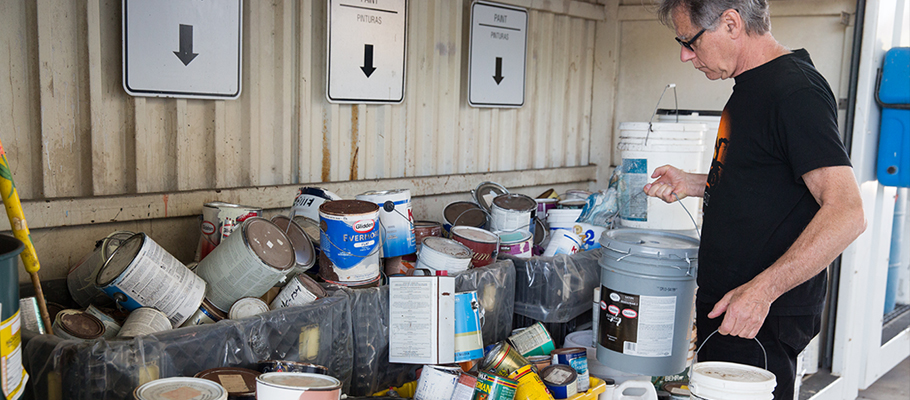
Use energy efficient materials and practices
A remodeling project is a great opportunity to add energy efficient upgrades to your home. Incorporating more energy-efficient products is not only environmentally friendly, but it can also make your home more comfortable by eliminating issues like drafts and reducing outside noise. In some cases, you’ll save money upfront (especially if you take advantage of incentive programs). In other cases, your savings will show up longer-term as green remodeling choices pay for themselves over time.
First, it may be useful to measure your home’s current energy use to determine where your biggest opportunities for energy savings are. Check out the Environmental Protection Agency’s (EPA) Energy Star program to measure your home’s energy use and get tips on energy upgrades. You can also schedule a home energy audit with Xcel Energy to learn how your home currently performs and how you can make it more efficient.
Energy efficiency upgrades could include repairing or replacing windows, updating insulation, switching to energy-efficient lighting, addressing moisture issues, or switching to a smart thermostat. If you are replacing appliances, look for ENERGY STAR® certified dishwashers, washers, dryers, air conditioners and more. Also, be sure to check out the EPA’s Energy Star product finder guide to compare options.
If you are working with a designer or contractor, share your energy efficiency goals early and ask for updates throughout the project.
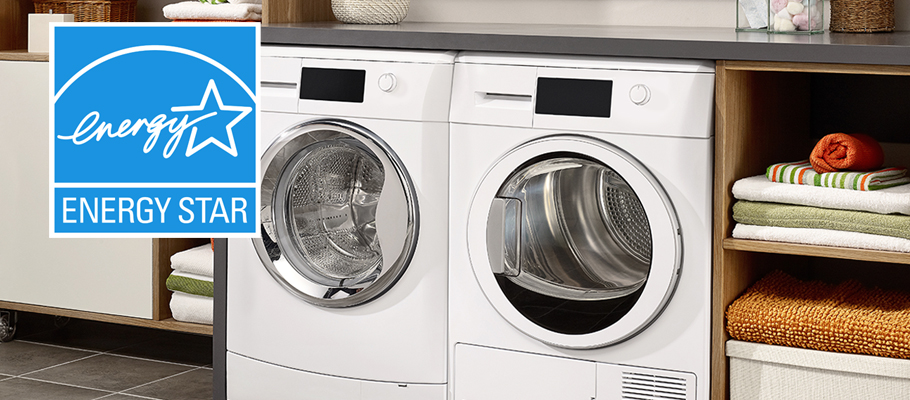
Green remodeling contractors and certifications
Partnering with a contractor who is committed to green remodeling can help make the project go smoothly. Start by identifying contractors that are committed to sustainability and green best practices. Then, share your sustainability goals and your desire to use green materials. Finally, be sure your contractor understands how various systems within your house interact with each other (e.g., heating, ventilation, plumbing) and can help you make sustainable decisions.
You can search for designers, architects, and planners focused on sustainability on the American Institute of Architects Minnesota website.
There are also a variety of certifications that can help you identify potential contractors for your green remodeling project, including:
- Green Advantage Personnel Certification credentials people who build high-performance, healthy buildings.
- The North American Board of Certified Energy Professionals PV Certifications is for people working in the renewable energy field such as solar.
- Certified Green Building Professional from Build it Green teaches the principles of green building and a systems approach to the design, construction, and operation of residential buildings.
Incorporating salvaged and reclaimed building materials
Instead of heading to the big box retailer to buy new materials, consider shopping for salvaged and reused building materials to add unique touches to your project. Cabinets, flooring, sinks, light fixtures and much more – including period-specific building materials – can be found at building material reuse stores across the Minneapolis metro area, including:
- Architectural Antiques
- Bauer Brothers Salvage
- Better Futures Minnesota
- City Salvage
- Guilded Salvage
- Habitat for Humanity ReStore
Buying reused building materials also closes the loop on the reuse system and sends a message that salvaged products are valued.
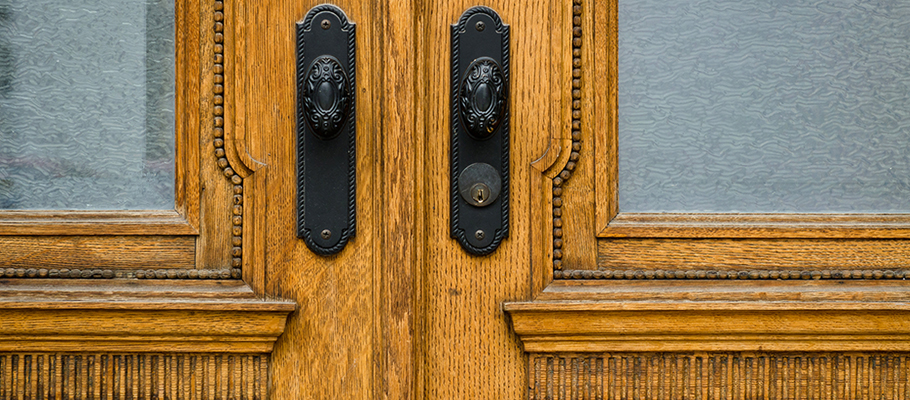
Additional resources
- Hennepin County deconstruction grants: Learn more about Hennepin County’s grants for homeowners and developers to deconstruct structures rather than demolish them to salvage building materials. This resource also includes guidance for how to salvage, reuse or recycle materials during your home remodeling project.
- Hennepin County choose to reuse: Get more tips for reducing your amount of construction and demolition waste.
- Xcel Energy: Explore the different offers available for your home energy-efficiency upgrades and improvements.
- CenterPoint Energy: Learn how to save energy and money with CenterPoint Energy’s energy efficiency resources and home appliance rebates.
- Minnesota Commerce Department Home Energy Guide: Discover how to make simple, energy-saving improvements to your home.
- The Minnesota Department of Commerce Division of Energy Resources: Find information and assistance on energy conservation, energy efficiency and renewable energy options.
- Minnesota Tool Library: Rent tools and equipment to help with your green remodeling project and take classes to learn more home improvement skills.
- Rethos: Places Reimagined: Find a variety of resources for preserving old homes, including classes on repairing old windows and doors.
